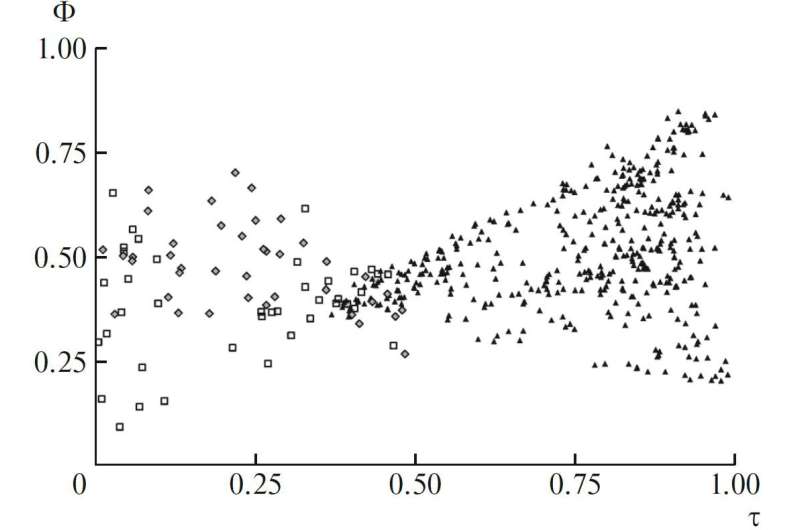A new method for quantitative estimation of the degree of similarity of coordination polyhedra

The problem of the relationship between the structure of materials and their physical properties is one of the global problems of the present day. For many years, researchers of the Lobachevsky University's Faculty of Physics have been working to solve it. In particular, systematic experimental and theoretical studies of the atomic structures of crystals of various materials are conducted at the UNN Department of Crystallography and Experimental Physics.
The traditional approach to describe the atomic structure of a crystal is to use the polyhedral method based on the description of the model of a crystal by means of coordination polyhedra (polyhedra built on atoms as their vertices). An important contribution to the development of this method was made by Academician N.V. Belov, the originator of the crystallographic research at the UNN Faculty of Physics. The polyhedral method greatly simplifies the crystallochemical analysis of complex atomic structures. Crystal structure as a whole is represented in the form of a spatially ordered system of coordination polyhedra, thus, a transition is performed from an atom to a larger structural unit, the coordination polyhedron. On the other hand, the analysis of individual coordination polyhedra makes it possible to determine the symmetry of a particular atom's environment, its energy and chemical state.
In real crystals, coordination polyhedra often have a distorted shape, that is, they differ from ideal polyhedra. The presence of distortion of the coordination polyhedron and its magnitude are due to a variety of factors, including the energy state of the central atom, the chemical and physical features of the environment of the central atom, the mechanical stresses arising in the atomic structure framework of the crystal, and many more. Some types of coordination polyhedra distortion significantly affect the physical properties of materials. For example, distortion of the coordination polyhedron of an activator ion in a laser crystal can lead to a Stark splitting of electron terms, which often results in emission spectra broadening. Thus, the problem arises of giving a quantitative estimate of the distortion in a real coordination polyhedron.
Associate Professor Nikolai Somov and Assistant Professor Pavel Andreev from the Department of Crystallography and Experimental Physics at the Lobachevsky State University of Nizhny Novgorod have proposed a new approach to estimate the degree of similarity of a coordination polyhedron to a certain reference polyhedron. The degree of similarity of a coordination polyhedron is a scalar value strictly equal to unity if the coordination polyhedron is similar to the reference polyhedron; in other cases it takes values from zero to one. The proposed method is implemented in the form of a computer program that is freely available (http://phys.unn.ru/ps/).
The method for quantitative estimation of the degree of similarity of coordination polyhedra was tested on more than 400 crystalline structures of organometallic compounds of pentavalent antimony and bismuth. It was shown that the proposed approach is consistent with one of the main theorems of structural crystal chemistry, and the advantages of the new approach were demonstrated using concrete examples.
More information: N. V. Somov et al, On Quantitative Estimation of the Degree of Similarity of Coordination Polyhedra, Crystallography Reports (2018). DOI: 10.1134/S1063774518010170
Provided by Lobachevsky University











.jpg)







